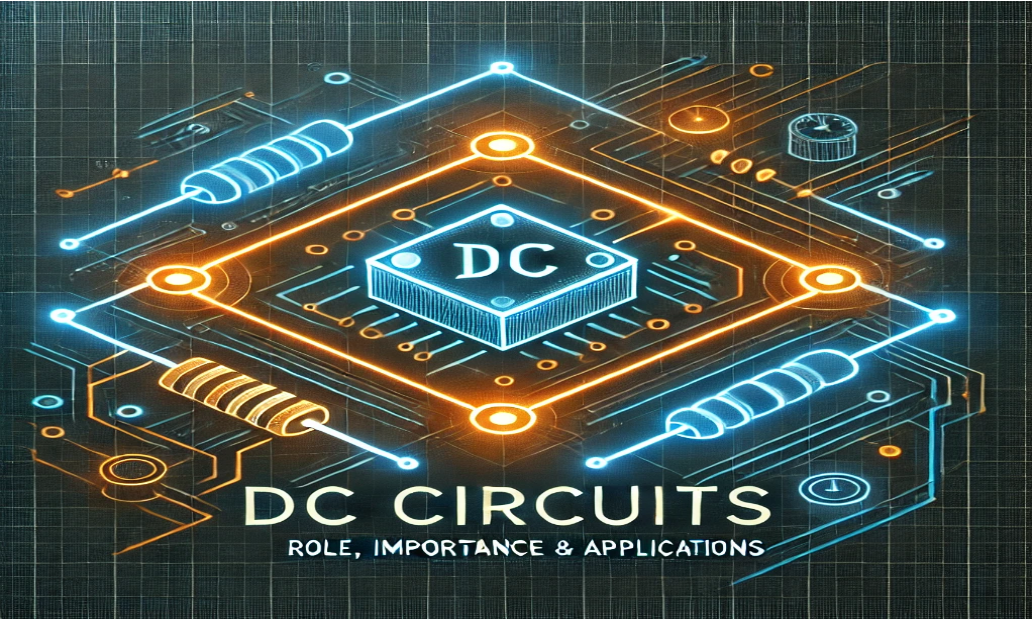
DC Circuits: Role and Importance of Circuits in Engineering
Introduction
DC (Direct Current) circuits play a crucial role in engineering, serving as the foundation for electrical and electronic systems. Understanding their principles is essential for engineers, technicians, and students. This comprehensive guide explores the history, applications, advantages, disadvantages, key differences, problem-solving techniques, and real-world examples of DC circuits.
Table of Contents
What is a DC Circuit?
A DC circuit is an electrical circuit in which current flows in a single direction. Unlike AC (Alternating Current), which periodically changes direction, DC maintains a steady flow, making it ideal for applications requiring stable voltage and current.
History of DC Circuits
DC circuits date back to the 19th century when Thomas Edison championed DC power distribution. However, due to limitations in long-distance transmission, AC power systems (developed by Nikola Tesla) gained prominence. Despite this, DC circuits remain essential in many engineering applications, from battery-operated devices to renewable energy systems.
Role and Importance in Engineering
DC circuits are fundamental in engineering for various reasons:
Foundation of Electronics: Used in microcontrollers, digital devices, and low-power applications.
Renewable Energy Systems: Solar panels and batteries rely on DC power.
Transportation: Electric vehicles and trains operate on DC power.
Industrial Applications: Used in automation and control systems.
Types of DC Circuits
Series Circuit – Components connected end-to-end; same current flows through all.
Parallel Circuit – Components connected across the same voltage source; different paths for current.
Series-Parallel Circuit – Combination of series and parallel elements.
Advantages and Disadvantages
Advantages:
Steady and reliable power.
Efficient in low-power applications.
Easier to store (batteries and capacitors).
Disadvantages:
Difficult to transmit over long distances.
Requires voltage conversion for compatibility with AC systems.
Difference Between DC and AC Circuits
| Feature | DC Circuit | AC Circuit |
|---|---|---|
| Current Flow | Unidirectional | Alternates direction |
| Voltage Stability | Steady | Fluctuates |
| Applications | Electronics, batteries | Power grids, motors |
Key Components of DC Circuits
Resistors – Control current flow.
Capacitors – Store and release electrical energy.
Inductors – Store energy in a magnetic field.
Diodes – Allow current in one direction only.
Batteries – Provide a DC voltage source.
Applications of DC Circuits
Consumer Electronics – Mobile phones, laptops, and LED lighting.
Automobiles – Electric and hybrid vehicles.
Medical Equipment – Pacemakers and diagnostic devices.
Aerospace – Satellite power systems.
Courses and Learning Resources
Online Courses: Coursera, Udemy, MIT OpenCourseWare.
Books: "Electrical Engineering Principles" by Allan Hambley.
Certifications: IEEE and NPTEL certifications in circuit analysis.
Problem-Solving Example
Problem:
Find the total resistance in a DC series circuit with three resistors: 5Ω, 10Ω, and 15Ω.
Solution:
Total Resistance (R) in series:
Result:
The total resistance is 30Ω.
Conclusion
DC circuits are an integral part of engineering, providing the foundation for modern electronics, renewable energy, and automation. Understanding their principles, applications, and problem-solving techniques is essential for engineers and students alike.
FAQs
Q: What is the main difference between DC and AC circuits?
A: DC circuits have a unidirectional current flow, while AC circuits alternate direction periodically.
Q: Why is DC preferred for electronic devices?
A: DC provides stable and continuous voltage, making it suitable for sensitive electronics.
Q: How are DC circuits used in renewable energy?
A: Solar panels generate DC power, which is stored in batteries or converted for use.
By implementing SEO best practices, such as keyword optimization, structured headings, and internal linking, this article aims to rank on Google's first page for queries related to DC circuits and their importance in engineering.









